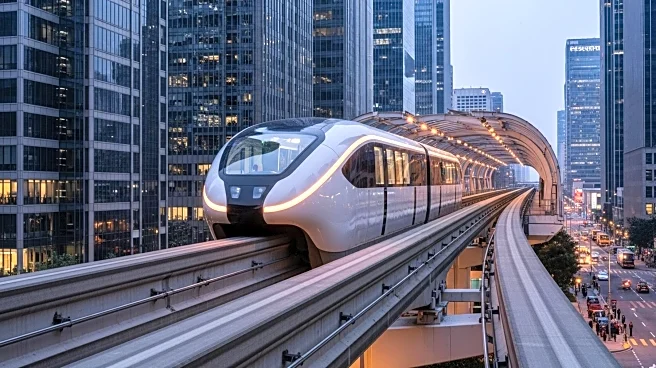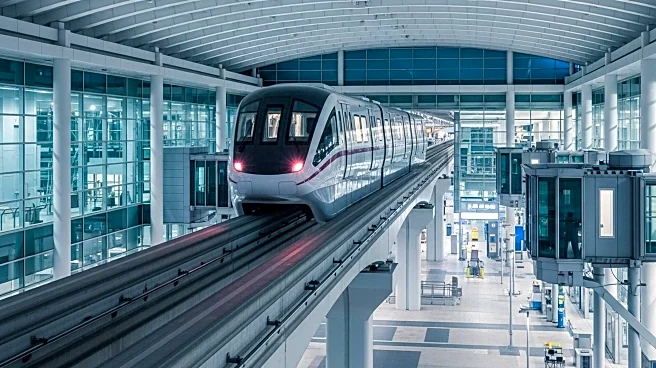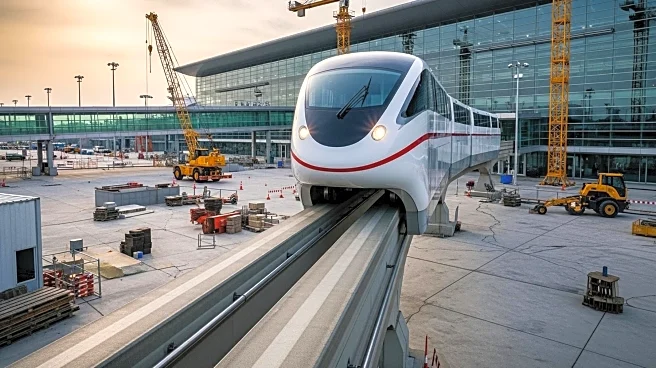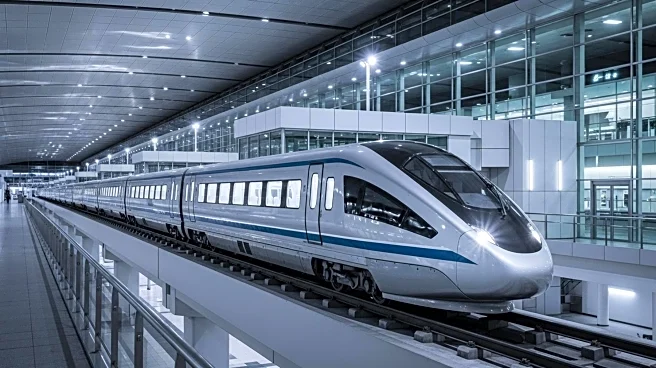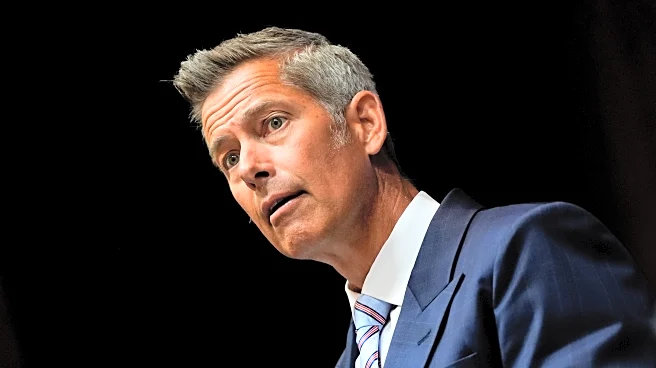What's Happening?
A joint venture between Tutor Perini and O&G Industries has commenced the $3.5 billion AirTrain Newark replacement project at Newark Liberty International Airport. The Port Authority of New York and New Jersey announced that the new 2.5-mile automated rail system will replace the outdated AirTrain, which has been operational since 1996. The new system is expected to serve up to 50,000 riders daily and will connect directly to the airport's new Terminal A. The project includes the construction of an elevated guideway and three new stations that will integrate with the airport's future terminal network. The current AirTrain system will remain operational until the new system is completed, with some service interruptions anticipated over a 28-month period, excluding peak travel times.
Why It's Important?
The AirTrain Newark replacement is a significant component of the Port Authority's EWR Vision Plan, which aims to transform Newark Liberty International Airport into a world-class gateway. This project is crucial for modernizing the airport's infrastructure and improving transportation efficiency for travelers. The initiative also emphasizes workforce development, requiring contractors to engage a diverse range of subcontractors and develop local workforce programs. This focus on inclusion is particularly relevant given the challenges posed by the federal government shutdown and efforts to reduce programs that promote minority and women participation in federal contracts.
What's Next?
The Port Authority expects the new AirTrain system to begin service in 2030. As construction progresses, stakeholders will need to address potential service disruptions and ensure that the project remains on schedule. The ongoing federal government shutdown could impact funding and progress on related infrastructure projects, necessitating careful planning and coordination to mitigate delays.
Beyond the Headlines
The AirTrain Newark project highlights broader issues related to infrastructure development and federal policy. The emphasis on workforce development and inclusion reflects ongoing debates about the role of government in supporting minority and women-owned businesses. Additionally, the project underscores the importance of modernizing transportation systems to meet future demands and enhance economic growth.
